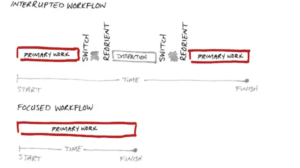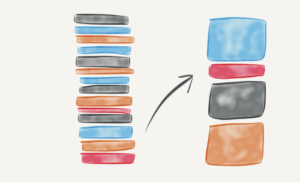
HR Info: Optimizing your time at work.
Everyone already knows that you cannot control time and time management is really more about managing yourself. There are only 24 hours in a day and that never changes. There are lots of deadlines, projects, meetings, proposals and assignments; Adopting good time management is not about squeezing as many tasks as you can into your day. It’s about simplifying how you work and getting things done faster and better.
With better time management, you will have more time to relax and do things at a comfortable pace. It’s about working smarter, not harder. Time is as good as gold, efficiency counts!
In this post, I am going to share with you some popular time management techniques to help you make time for the things that matter. Want to focus on things that matter? Get more done? Read on!
I will be sharing this in the order that I feel is easiest to be applied!
1: Eat That Frog

Brian Tracy’s “Eat that Frog” comes from a Mark Twain saying “Eat a live frog the first thing in the morning and nothing worse will happen to you the rest of the day.”
Each day, identify that MOST important task. This will be your frog. It is the task that will create the most impact on your work. Begin your day by tackling this and you will need the discipline to do this without distractions.
This works because it builds momentum and a sense of accomplishment.
We have another one from Mark Twain:
“If it’s your job to eat a frog, it’s best to do it first thing in the morning. And If it’s your job to eat two frogs, it’s best to eat the biggest one first.”
2: Pomodoro Technique

Developed in the late 1980s by Francesco Cirillo, the Pomodoro Technique is centred on the idea that work should be broken down and completed in intervals separated by short breaks. The Pomodoro Technique is a simple time management system that forces you to single-task.
This is how it works:
You work for 25 minutes, then take a five minutes break. Each of these 25-minute periods is called a “Pomodoro”, named after the Italian word for tomato. (Cirillo had used a tomato-shaped kitchen timer, hence the name.) After 4 Pomodori, you take a longer break of 15–20 minutes. Of course, nothing should interrupt an ongoing Pomodoro.
And why does this work? The philosophy behind this technique is simple — frequent breaks can improve mental agility, letting you feel refreshed and recharged, ready to tackle new tasks.
3: Organise your week around momentum
Energy levels affect productivity. So you should schedule critical work for peak productivity times.
Energy levels also vary by day of the week. Tuesday seems to be the most productive day for most people. Find your patterns!
Here is my example:
- Monday: Energy ramps out of the weekend. Schedule low-demand tasks like setting goals, organizing, and planning
- Tuesday, Wednesday: Peak of energy. Tackle your most difficult tasks. You can write, brainstorm, schedule your Make Time
- Thursday: Energy begins to ebb. Schedule meetings, especially when you need consensus
- Friday: Lowest energy level. Do open-ended work, long-term planning, and relationship building
4: Remove Distractions

This is definitely an investment. You spend a little bit of time removing the distractions to reap a whole lot more in the long run.
2 hours of switching between tasks do not beat an hour of full-on focus. Remove distractions from your work to avoid task-switching costs.
To remove distractions:
- Turn off all notifications on your phone and computer
- Leave your phone away from your workspace
- Use noise-cancelling headphones. Co-workers are less likely to interrupt you if you look plugged in and on-task
- Save articles to Pocket or Instapaper and read them later
- Turn off Wi-Fi if it’s not needed for a task
- Don’t use social media at work. Can’t resist? Schedule “distraction time” throughout the day
- Put your phone and apps (such as Slack, Hangouts, and Messenger) on “Do Not Disturb”
- Change your inbox to a GTD Gmail to become productive in email. You can also use Inbox Pause to stop getting flooded with new emails
- If you have an office, shut the door
5: Batching

Batching is grouping specific tasks that are similar and doing them together. The idea is to focus on the tasks less often, and for longer. When you process all your emails in one sitting or cook for an entire week on a Sunday, you are batching.
Batching forces your brain to focus on one type of task at a time. And so it reduces the start-up and slow-down time, daily clutter, and improves focus.
Here are a couple of tasks you could batch together:
- Outlining all your blog posts for the upcoming week in one sitting
- Processing all communications: emails, Slack, and phone calls
- Updating several related worksheets at the same time